“My son will only eat crunchy things.” “My daughter will only eat things that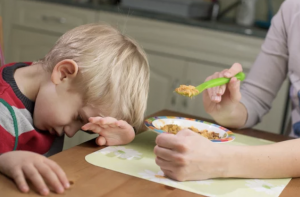 are yellow.” “My son hates anything mushy.” Sound familiar? If your child has ASD and often refuses certain foods, you are not alone, as this is a common issue amongst these children.
are yellow.” “My son hates anything mushy.” Sound familiar? If your child has ASD and often refuses certain foods, you are not alone, as this is a common issue amongst these children.
Children with ASD refuse certain foods due to a variety of issues including:
- Restricted interests – A common characteristic of children with ASD
- Sensory issues – Hyper- or hypo-sensitivities to certain sounds
and textures - Motor deficits – Specifically in the areas of chewing and swallowing
- Gastrointestinal problems – Children with ASD may avoid certain foods because they exacerbate these problems, which then leads to their associating certain foods with pain.
Because the cause of the food refusal is often initially unclear, it is important that all potential underlying factors be considered and the following steps are taken until a cause can be identified:
- Schedule a medical evaluation to rule out any gastrointestinal issues.
- Meet with a speech pathologist in order to assess whether there may be any motor deficits that are contributing to the issue.
- Have an occupational therapist (OT) assess for any fine motor deficits that may be leading to difficulties handling certain utensils or maintaining a good posture while eating. An OT may also be able to identify any sensory deficits that may be contributing to food refusal.
Once a cause has been identified, the aforementioned professionals would then utilize particular interventions based on their specialty. If it is found though that the food refusal is not solely due to one of the above causes and is associated with a compulsive behavior or restricted interest, a behavioral therapist may be of assistance and may utilize one (or more) of the following interventions:
- Hierarchical exposure with reinforcement – This involves slowly introducing new foods and requiring certain behaviors that increase in difficulty in order to earn a reward. For example, for a child who is resistant to mushy foods, the therapist may first have the child simply look at a picture of mashed potatoes for a certain amount of time and once the child has completed this he or she is given a reward (e.g., engagement in a preferred activity such as playing with trains). Once the child has mastered this, he or she may be required to touch the picture before being given the reward. The required behavior would then continue to increase in difficulty until they are eventually looking at, touching and eventually eating real mashed potatoes.
- Differential reinforcement/attention – Involves attending to positive behaviors such as looking at the non-preferred food, touching it, etc., by providing a lot of praise and positive attention, while ignoring negative behaviors such as refusal, whining, and tantrumming.
Whatever the cause may be of your child’s food refusal, as we can see, there are several strategies and professionals available in order to help your child expand their palate – ultimately making meal times less stressful and more enjoyable for everyone.
The following resources were utilized in the development of the above:
Nath, S. (2014). Feeding problems in children with autism. Retrieved from https://iancommunity.org/ssc/feeding-problems-children-autism.
Koegel, R.L., Bharoocha, A.A., Ribnick, C.B., Ribnick, R.C., Bucio, M.O., Fredeen, R.M., & Kern Koegel, L. (2012). Using individualized reinforcers and hierarchical exposure to increase food flexibility in children with autism spectrum disorders. Journal of Autism and Developmental Disorders, 42(8), pp 1574–1581.
Universal Design for Learning (UDL) is a framework set forward for removing all possible learning barriers by foreseeing the needs of all students. It is the idea of implementing flexible strategies into lesson planning so that every student has access to the curriculum. It is built on the idea that there is not one kind of learning. Learning differs across multiple areas including tasks, development and individuals. This idea of teaching was first introduced to the educational world in the 1990’s. It has also become a national initiative due to the accessibility of technology.
Many teachers today have manipulated curriculums to meet the requirements of the three principles of the UDL’s style of learning and teaching. The educator provides flexible ways of representing the lesson content, flexible options for student engagement and flexible methods of action and expression. At times, principles may overlap.
As a NYC Public School educator, I have been fortunate to have received professional development on UDL. It has most certainly changed my perspective and mindset on educating students of all ages.
Multiple Means of Engagement, Representation and Action and Expression:
Under these principles, there are many modes of choice such as audio, visual and tactile. These principles can take many forms. One example, that consistently takes place in my 5th grade classroom, is the idea of allowing my students to have access to definitions of domain vocabulary. This happens through illustrations, sound files and pictures. Remember the idea is to provide access to all learners. This has strengthened my own practice. I used to modify curricula and differentiated my materials, specifically for students with disabilities. While planning, I would think of scaffolding the lesson to meet the goal of those students only. Now, with the idea of UDL, all students benefit from the three principles.
Another strategy I utilize within my own practice, is giving my students different options to show their understanding of learning. They can do this through a verbal conversation (one on one), a silent conversation, a picture (comic strip), written explanation and many more options.
Other examples of the three principles:
- Multiple means of representation:Video captioning and video description (i.e., adding text or audio to describe what happens in a video to support access by persons with visual difficulties); highlighted vocabulary in subject matter content, such as science and social studies materials; main ideas offered through graphic organizers; vocal directions matched with printed and visual/image representations (e.g., pictured directions in learning centers); pre-teaching opportunities for new vocabulary and concepts; color shading used for emphasis; use of Visuwords for vocabulary development; visual cueing for feedback during class.
- Multiple means of action and expression:Models of expert performance provided using differing approaches; paired voice with visual displays; outlines of subject matter content; use of Interactives: Elements of a Story to teach narrative structures; use of Writing Fun by Jenny Eather to develop expressive writing skills.
- Multiple means of engagement:Choice of topics for projects (including dinosaurs and astronauts, as appropriate); simple self-monitoring checklists in learning centers for students to self-assess completion and accuracy; consistent attention-getting techniques that use visual as well as auditory cues; and paired peers to share small-group activities.
http://www.readingrockets.org/article/universal-design-learning-meeting-needs-all-students
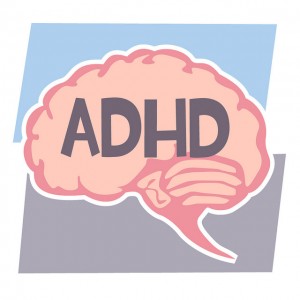 Attention Deficit Hyperactivity Disorder (ADHD) is a neurodevelopmental behavioral disorder characterized by a persistent pattern of inattention and/or hyperactivity-impulsivity. In order to be diagnosed with ADHD, symptoms must be present before the age of 12, be clinically significant in at least two settings (e.g., at home, at school, in social settings), and cause functional impairment. There are three types of ADHD: Hyperactive-Impulsive Type, Inattentive Type, and Combined Type (requiring symptoms of both inattention and hyperactivity/impulsivity).
Attention Deficit Hyperactivity Disorder (ADHD) is a neurodevelopmental behavioral disorder characterized by a persistent pattern of inattention and/or hyperactivity-impulsivity. In order to be diagnosed with ADHD, symptoms must be present before the age of 12, be clinically significant in at least two settings (e.g., at home, at school, in social settings), and cause functional impairment. There are three types of ADHD: Hyperactive-Impulsive Type, Inattentive Type, and Combined Type (requiring symptoms of both inattention and hyperactivity/impulsivity).
What are the symptoms of ADHD?
- Inattention: Requiring six of more symptoms for at least six months:
- Often fails to give close attention to details or makes careless mistakes
- Often has difficulty sustaining attention in tasks
- Often does not seem to listen when spoken to directly
- Often does not follow through on instructions and fails to finish what they started
- Often has difficulty with organization
- Often avoids, dislikes or is reluctant to engage in tasks that require sustained mental effort
- Often loses things necessary
- Is often easily distracted by extraneous stimuli
- Is often forgetful in daily activities
- Hyperactivity and Impulsivity: Requiring six of more symptoms for at least six months:
- Often fidgets with or taps hands or feet or squirms in seat
- Often leaves seat in situations when remaining seated is expected
- Often runs about or climbs in situations where it is inappropriate
- Often unable to play or engage in leisure activities quietly
- Is often “on the go” acting as if “driven by a motor”
- Often talks excessively
- Often blurts out an answer before a question has been completed
- Often has difficulty waiting his or her turn
Who is typically diagnosed with ADHD?
Currently, ADHD is the most commonly diagnosed pediatric behavioral disorder, affecting 11% of school-aged children, and studies suggest that 9.2% of boys and 2.9% of girls demonstrate behaviors consistent with the diagnosis. Boys are most likely to be diagnosed with the disorder than girls, and girls are more likely to manifest the disorder with symptoms of inattention as opposed to symptoms of hyperactivity/impulsivity most commonly found in boys.
What are some of the causes of ADHD?
Though a strong genetic component has been found, ADHD is complex and may be the result of a number of different factors, and does not have one single cause. Some environmental factors which may increase the likelihood of developing ADHD is exposure to lead or pesticides as an infant or toddler, premature birth or low birth weight, and brain injury. Parenting style, family stress, and exposure to trauma are all factors that do not cause, but may exacerbate symptoms of ADHD.
Children with ADHD often experience difficulties academically, in peer groups, and may exhibit challenging behavior at home. These children are at risk for problems in adolescence and adulthood, including difficulties with maintaining relationships, substance abuse, and other comorbid problems, and therefore treatment early on is essential, to help them be successful in adolescence and adulthood.
What are the most effective and evidence based treatments for ADHD?
Treatment of ADHD often requires a multimodal approach, which would include a number of different modalities, such as medication, behavioral interventions, and skills training. Below are evidenced based treatments for children with ADHD.
- Pharmacological interventions – medication, typically stimulants, is the best supported treatment for ADHD. Medication helps most children improve in their ability to stay focused, and to reduce hyperactivity and impulsivity. Medication does not however alleviate all symptoms of ADHD and is typically recommended and most effective when paired with interventions focused on skill development and behavior management.
- Behavioral Parent Training – is one of the most widely used treatments for children with ADHD, and can be done in both individual and group settings. Behavioral management training (ages 8+) and Parent-Child Interaction Therapy (ages 2-7) are two interventions that have been successful in treating symptoms of ADHD. Typically, parent training focuses on positive reinforcement and selective attention, parent-child relationship building, effective limit setting, problem solving, and anger management. Sessions usually involve psychoeducation, homework and review, role playing, modeling, handouts, and review of goals/progress.
- Behavioral Classroom Management – Interventions that involve management of classroom behavior and communication with teachers and school personnel are found to be successful. Specifically, Daily Report Cards (DRC) and consultation services have been found effective in reducing difficult behavior exhibited by students with symptoms or diagnoses of ADHD.
- Behavioral Peer Interventions – Studies have found that typically social skills training alone does not produce positive effects, however, when combined with behavioral parent training or when conducted in a recreational setting such as intensive summer treatment programs, this intervention has been effective. Summer treatment programs may include social skills training, group play with contingency management, behavior management, parent training, and home rewards.
- Executive function interventions – These interventions have been found effective in targeting ADHD-related executive functioning weaknesses, such as inhibitory control, self-regulation, cognitive flexibility, working memory, and planning and organizing.
- Computerized interventions – There have been a number of computerized programs that have been developed to target ADHD symptoms, improving attention and working memory, reducing behavior problems, and increasing academic achievement. The evidence however to support its effectiveness is limited.
- Neurofeedback – this intervention helps individuals learn to control their brain wave activity to achieve a calmer state which would in turn reduce symptoms of ADHD. This treatment shows promise but more research is needed.
- Exercise and mindfulness training – There have been some positive results that have found that these interventions have been shown to enhance mental flexibility, and facilitate executive functioning in children with ADHD.
- Diets, vitamins, and supplements – There is little evidence that show that the use of special diets and nutritional supplements can resolve ADHD symptoms, but well balanced and healthy diets are known to show health benefits which can impact attention, concentration, and behavior.
The following resources were utilized in the development of the above:
- American Psychiatric Association. (2013).Diagnostic and Statistical Manual of Mental Disorders (5th ). Washington, DC: American Psychiatric Publishing.
- Evans, S.W., Owens, J., & Bunford, N. (2014). Evidence- Based Psychosocial Treatments for Children and Adolescents with Attention-Deficit/Hyperactivity Disorder. Journal of Clinical Child Adolescent Psychology, 43(4), 527-551.
 Throughout life upsetting events, also known as traumas unfortunately occur. The National Child Traumatic Stress Network (NCTSN) differentiates between a trauma and a traumatic event.
Throughout life upsetting events, also known as traumas unfortunately occur. The National Child Traumatic Stress Network (NCTSN) differentiates between a trauma and a traumatic event.
According to NCTSN, a trauma is a dangerous and scary event.
A traumatic event is when there is danger and threat of injury or death as well as fear and helplessness. This is an important differentiation because not all traumas (scary/upsetting events) are traumatic events.
Types of traumatic events include but are not limited to:
- Abuse (physical or sexual)
- Accidents / Injury
- Neglect
- Witnessing violence (domestic or within the community)
- Natural disasters
- Fire
- Crime
- Terrorism
- Unexpected death of a loved one
Children exposed to traumatic experiences have varied responses. A child that experiences a traumatic event may have difficulties and experience stress. Their stress reactions may resolve quickly or they may become ongoing. A child may also have a delayed reaction. Each child is different. When a child’s ability to cope and their functioning is impacted for more than a month, a child may be experiencing traumatic stress. They may meet the criteria for the psychiatric condition Posttraumatic Stress Disorder (PTSD). The Diagnostic and Statistical Manual of Mental Disorders, Fifth Edition (DSM-5) stated that PTSD can occur in all ages beginning at age one. Not every child experiencing stress related to a trauma meets the criteria for a diagnosis of PTSD.
PTSD is a psychiatric condition. In addition to exposure a traumatic event symptoms of PTSD are the following:
- Intrusive memories /re-experiencing the event (flashbacks, nightmares)
- Avoidance behavior / numbing feelings
- Negative mood and thoughts
- Feelings of arousal (irritability, sleep troubles, restlessness)
Trauma can impact a child and their family in large ways. The way that traumatic stress appears will vary among children and will depend on their age and developmental stage. There are various emotional, behavioral and cognitive responses you may see in your child.
Below are some, but not all, noteworthy signs exhibited in children that suggest they may be struggling:
3- 5 years old
- Anxiety
- Difficulty focusing or learning
- Acting out in social situations / disruptive
- Separation difficulties
- Somatic complaints (stomach troubles or headaches)
- Unusual clinginess / regression in talking
- Bedwetting
- High level of anger or excessive temper
- Changes in play
6-12 years old
- Anxiousness
- Sleep or eating changes (nightmares)
- Irritability / agitation / acting out
- Shame / guilt expressed
- School problems (concentration difficulties, incomplete work, refusal to attend school)
- Withdrawal from others
Parents do not wish for their child to have difficulties or experience scary events. If your family or child has experienced a traumatic event and you are concerned, seeking professional help can be useful. Regardless if they meet the criteria for PTSD, children may benefit from support if they have been exposed to a traumatic event. Individual, group and/or family therapy can provide education about reactions to trauma, assist with how to reestablish safety and provide a child as well as parents, a place to appropriately process and express feelings in a helpful and planned manner.
http://www.apa.org/pi/families/resources/children-trauma-update.aspx
American Psychiatric Association. (2013). Diagnostic and statistical manual of mental disorders (5th ed.). Arlington, VA: American Psychiatric Publishing.
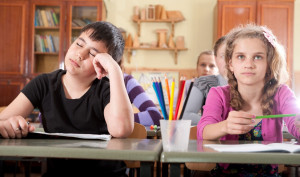 For many parents and children, back to school is an exciting time of year filled with enthusiastic conversations about new teachers to meet, after school activities to join and new classmates who will soon become friends. For children who struggle with learning or social issues, who suffer from anxiety, attention difficulties or who have trouble controlling their emotions at school, this time of year can be filled with equal parts hope and dread by children and parents alike. Hoping that this year will be different and dreading that it will not, parents start the school year struggling to convince their child to keep trying and to stay positive, even when the parents may not feel that way themselves. If you are a parent who feels more anxiety than excitement at the beginning of the school year, here are some proactive things to do to help your child transition smoothly back to school and to set them on a path to success in the school year.
For many parents and children, back to school is an exciting time of year filled with enthusiastic conversations about new teachers to meet, after school activities to join and new classmates who will soon become friends. For children who struggle with learning or social issues, who suffer from anxiety, attention difficulties or who have trouble controlling their emotions at school, this time of year can be filled with equal parts hope and dread by children and parents alike. Hoping that this year will be different and dreading that it will not, parents start the school year struggling to convince their child to keep trying and to stay positive, even when the parents may not feel that way themselves. If you are a parent who feels more anxiety than excitement at the beginning of the school year, here are some proactive things to do to help your child transition smoothly back to school and to set them on a path to success in the school year.
With the teacher/school:
- Set up a time to speak with your child’s teacher in the beginning of the school year to help them get to know your child and how to best work with him. Does he respond best to prompts before transitions? Does she need an extra motivator to help her engage in work that is challenging? Does he sometimes not try when a new challenge is presented because he is nervous about giving a wrong answer? Giving the teacher the tools to best work with your child and helping the teacher to better understand and feel empathic towards your child before any issues arise will help set up both parties for success.
- Set up frequent communication with the school. Check in with the teacher via phone or email every other week to make sure everything is going ok and to be on top of any issues that arise. Ask them to let you know about the good things your child is doing at school as well so that you can share this with your child and help to create a positive relationship with their teacher.
- Introduce yourself to anyone else who will be working with your child throughout the year such as the guidance counselor or reading specialist and let them know you are available to speak and are interested in being involved in their work with your child at school.
- Introduce yourself to any of the “specials” teachers (art, gym, music…) who will be working with your child, especially if it is an area where your child normally struggles or excels. If your pre-teen daughter has a difficult time maintaining her emotions during gym class, let the teacher know ahead of time so that he can react appropriately. If your son is particularly gifted or interested in music class, tell the teacher so that she can help make this a part of the day where he will feel good about himself.
With the child:
- Set up a routine. This will help you all get back into “school mode” and will ensure that everyone is getting their work done and is in bed on time. It is also very helpful to have a structured morning routine in order to ensure getting to school on time.
- Instead of asking “How was your day at school?” ask something more specific such as:
- what was the most/least interesting thing you learned today?
- What was something that happened that made you laugh?
- When were you happy/bored today?
- What is the most popular game to play at recess?
- Who had the best lunch today?
- If you had to pick one of your teachers to go have ice cream with, which one would it be? Which one would it definitely NOT be?
Outside of the classroom:
- Sign up your child for an after-school activity that they are interested in doing. This way you know that they will be engaging in an activity that is enjoyable to them and where they can succeed. For children who do not often have moments of success in school this is an important component in ensuring they engage in an activity where they succeed and feel good about themselves. For children who struggle socially in school this can be a place to try and make friends who are not connected to school, another opportunity to make social connections.
- Schedule some time alone with your child where there is no talk of school or homework or teachers. Spend a few minutes each night talking about something they are interested in and that they enjoy talking about. This is an important tool in maintaining a positive relationship between parent and child for those times during the school year when things may get tough with missed homework assignments or calls home from teachers.
While these tips may be helpful for many children and parents, there are also times when outside help is needed. Cognitive Behavioral Therapy (CBT) is an effective treatment for many different difficulties that may be getting in the way of a successful school year for you and your child. Finding a clinician who can work with you, your child and your child’s school can be an important element in helping your child have a positive and successful experience at school.
 Sleep is a restorative process that helps us function physically and emotionally and has a direct effect on our behaviors and in our ability to sustain attention. Sleep gives your body a rest, like a mini-vacation, and helps it prepare for the next day. Sleep is essential to our well-being. Reduced sleep can have a negative effect on our overall functioning throughout the day.
Sleep is a restorative process that helps us function physically and emotionally and has a direct effect on our behaviors and in our ability to sustain attention. Sleep gives your body a rest, like a mini-vacation, and helps it prepare for the next day. Sleep is essential to our well-being. Reduced sleep can have a negative effect on our overall functioning throughout the day.
Sleep hygiene involves a number of different steps necessary to have a normal, quality night sleep and subsequently leading to daytime alertness.
Why is a good night’s sleep important for children?
- contributes to both physical and mental health
- helps kids feel good, and do well in school
- plays a role in mood and behavior
- can reduce aggression, hyperactivity, depression and anxiety, and increase attention
How can poor sleep habits affect children in school?
- Decreases ability to stay focused
- Can become easily distracted
- Exhibit hyperactivity
- Can be impulsive
- Show irritability and fussiness
- Increased sleepiness in the classroom
What are the basics of sleep hygiene?
- Routines
- Establish a bed time – based on the child’s age
- Toddlers: 12-14 hours of sleep
- Preschoolers: 11-12 hours of sleep
- School-age children: 10-11 hours of sleep
- Teens: 8-9 hours of sleep
- Limit screen time or high stimulation activities before bed
- Calming bedtime routine
- Engage in activities that promote relaxation such as taking a bath and reading a book
- Child should wake up at the same time everyday
- Bedtime should follow a predictable sequence of events
- Establish a bed time – based on the child’s age
- Security objects such as a doll or a blanket are often helpful for children to feel safe and secure
- Engaging in physical exercise during the day can often help with sleep at night
- Bedroom should be cool and comfortable
- Bedroom should be dark and not too distracting
- Limit bright lights, clocks, and phones
- The bed should be used only for sleeping
- Teenagers often use their beds for homework and TV – this can decrease their ability to go to sleep at night.
- Beds should be associated with sleep
- Consistency is key!
- Stick to your routine
- Predictability is important
What to avoid?
- Drinking many liquids before bedtime
- Caffeine such as sodas, chocolate, tea
- Doing stimulating activities before bedtime
- Using the bed for activities other than sleep
- Putting the child to bed after falling asleep somewhere else
- Staying up past their bedtime
What happens if children come into their parents’ room in the middle of the night?
- Limit attention
- Get them back to their bed as soon as possible
- Minimize conversations
- Do not let them come into the bed
- Walk them back to their room
If the child continues to need comfort to fall asleep, parents can sit in a chair next to their bed until they fall asleep. It is important that children learn to sleep in their bed, and to fall asleep on their own.
When to seek help?
If your child continues to have serious trouble falling asleep and consistent sleep routines are not working, consulting with a pediatrician or a mental health professional can be beneficial to assist in determining the cause and learning techniques to help children relax before bed in order to fall asleep more easily.
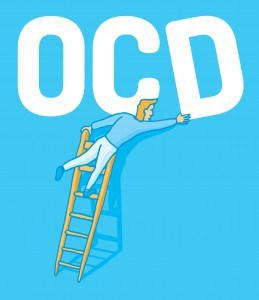 Obsessive-compulsive disorder (OCD) is a long-lasting psychiatric condition which causes impairment in a person’s overall functioning. OCD was once part of the Anxiety Disorders category within the Diagnostic and Statistical Manual of Mental Disorders, 4th edition (DSM-IV) however in the newest edition; DSM-5 OCD has been moved to its own category with other related disorders.
Obsessive-compulsive disorder (OCD) is a long-lasting psychiatric condition which causes impairment in a person’s overall functioning. OCD was once part of the Anxiety Disorders category within the Diagnostic and Statistical Manual of Mental Disorders, 4th edition (DSM-IV) however in the newest edition; DSM-5 OCD has been moved to its own category with other related disorders.
Two characteristics of OCD are:
- Obsessions: unwelcome thoughts/worries, urges, or images that are experienced as intrusive and cause anxiety
- Compulsions: behaviors or mental acts (rituals) that a person feels determined to perform, continually to decrease the anxiety experienced from obsessions
In addition to the presence of obsessions and/or compulsions other key factors of OCD are the amount of time a person is occupied by them and the level of impairment a person experiences.
The behaviors and the amount of difficulties are important to differentiate from a person that is highly organized, fixates over details or is perfectionistic in nature. A person with OCD will exhibit symptoms that are excessive or persistent causing challenges in their everyday routine and impact the quality of their life. This is different than a person who is successful or able to achieve due to their habits. Insight into symptoms varies from person to person.
Children can be impacted by OCD and their symptoms can often continue into adulthood. Children may also have a more difficult time recognizing their symptoms or expressing their troubles. The DSM5 states that females are more impacted than males in adulthood however males are more affected in childhood. Other psychiatric conditions likely may occur along with OCD, most commonly, depression, other anxiety disorders, or tic disorders.
Research shows that Cognitive-Behavioral Therapy (CBT) is the most valid and effective psychological treatment for OCD when symptoms are mild to moderate. CBT is appropriate in conjunction with medication when symptoms are more severe. If left untreated, OCD can significantly impact overall abilities to function easily. OCD cannot be cured however treatment is helpful.
Features for the treatment of OCD include:
- Psycho-education about the disorder provided by the clinician at the start of treatment.
- Exposure and response prevention using a gradual approach (hierarchy) to help a person face their fears and hold back from engaging in a behavior that typically lowers their anxiety (ritual or compulsion). A person learns to get used to the anxious feeling or the feeling is eliminated altogether (called habituation). Exposure exercises occur in and outside of sessions.
- With children incentive programs are useful to increase their motivation, preserve enthusiasm to engage in treatment and reward behaviors when completing exposures.
- Cognitive restructuring is taught to a person to help with changing their faulty thinking related to obsessions and increase useful self-talk.
- Parent training and family participation is important to recognize and reduce accepting or enabling OCD behaviors. Frequently, family members or parents help with behaviors (i.e., make changes in routines or participate in the behavior) in order to provide relief to their loved one.
- Relapse prevention is useful to help plan for bumps in the road after treatment ends. Symptoms may resurface which some people may interpret as a setback. Relapse preventions is to increase awareness for signs of relapse, organize a response and address the concerns before treatment has ended.
Lastly, booster sessions with the clinician, is a positive practice to help if OCD symptoms resurface. Booster sessions assist with reviewing skills and address any issues that arise.
American Psychiatric Association: Diagnostic and statistical manual of mental disorders. 5th Edition. Arlington: American Psychiatric Publishing; 2013.
Freeman,J., Garcia, A., Frank,H.., Benito, K., Conelea,C., Walther,M., & Edmonds (2014). Evidence Base Update for Psychosocial Treatments for Pediatric Obsessive-Compulsive Disorder. Journal of Clinical Child & Adolescent Psychology, 43:1, 7-26.
Mancuso,E., Faro,A., Joshi, G., & Geller, D. (2010). Treatment of Pediatric Obsessive-Compulsive Disorder: A Review. Journal of Child and Adolescent Psychopharmacology, 20, 299-309.
Wagner, A. (2003). Cognitive- Behavioral Therapy for Children and Adolescents with Obsessive-Compulsive Disorder. Brief Treatment and Crisis Intervention; 3:3, 291-306.
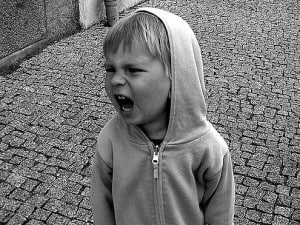 Oppositional Defiant Disorder (ODD) is characterized by symptoms and behaviors that fall into three different categories including:
Oppositional Defiant Disorder (ODD) is characterized by symptoms and behaviors that fall into three different categories including:
- Angry/Irritable Mood – often losing temper, being easily annoyed, often being angry and resentful
- Argumentative/Defiant Behavior – arguing with authority figures, actively defying or refusing to comply with requests, deliberately annoying others, blaming others for his/her mistakes
- Vindictiveness
In order for a person to be diagnosed with ODD, they must exhibit at least 4 symptoms and/or behaviors that are characteristic of the disorder and these symptoms/behaviors must cause distress to the individual or those close to the individual such as friends, family members, and co-workers. Lastly, ODD can vary in severity from mild to moderate to severe depending on the number of settings in which the individual exhibits symptoms/behaviors.
According to the Diagnostic and Statistical Manual of Mental Disorders, Fifth Edition (2013), the prevalence of ODD ranges from 1% to 11%, with an average prevalence rate of 3.3%. The disorder is more prevalent in males than in females before adolescence, but then evens out in adolescence and adulthood. The first symptoms of ODD often arise during the preschool years with their frequency often increasing during this time and into adolescence. ODD may also precede the development of conduct disorder and increases the risk of developing anxiety disorders and major depressive disorders as well. Risk factors for developing ODD include temperamental factors that lead to emotional dysregulation; harsh, inconsistent, or neglectful parenting practices; and a number of neurobiological markers (e.g., lower heart rate and skin conductance reactivity; reduced basal cortisol reactivity; abnormalities in the prefrontal cortex and amygdala).
What are the most effective and evidence based treatments for ODD?
Due to the stress that this disorder can cause in the individual as well as those around him/her, and the comorbid conditions that may develop such as anxiety and depression, early intervention is crucial. According to the American Academy of Child & Adolescent Psychiatry (2009), Oppositional Defiant Disorder treatment usually includes a combination of:
- Parent Management Training and Family Therapy to teach parents and other family members how to better manage their child’s behaviors through positive reinforcement of appropriate behavior and consistent discipline strategies.
- Cognitive Problem-Solving Skills Training to teach children more appropriate ways of handling stressful situations.
- Social Skills Programs and School-Based Programs to teach children how to interact appropriately with peers and improve their schoolwork.
- Medication to help manage the more distressing symptoms as well as symptoms due to comorbid disorders such as anxiety and depression.
According to Comer, et al. (2013) behavioral treatments that target behavior problems indirectly through helping parents develop different parenting techniques with the goals of increasing in-home predictability, consistency and follow through, and effective discipline have been the most studied forms of psychosocial treatment for ODD. These treatments help parents end negative coercive cycles through helping them increase positive attention for appropriate behaviors, ignore negative attention-seeking behaviors, and provide consistent time outs for noncompliance. Some of these best practices include:
- Parent-Child Interaction Therapy (PCIT) – Designed for children between the ages of 2 and 7 years-old that focuses on developing a secure attachment between the parent and child by teaching parents how to use positive attention to increase positive behaviors and consistent limit setting to decrease negative behaviors. Sessions include teaching of the skills with live coaching through a one-way mirror. Results include more positive parent-child interactions with increased compliance, social skills, language use, confidence and emotional regulation.
- Incredible Years – Designed for children up to 12 years-old and includes:
- A parenting program focused on strengthening parent-child interactions and attachment, reducing harsh discipline and fostering parents’ ability to promote children’s social, emotional, and language development.
- A child program focused on strengthening children’s social and emotional skills, such as understanding and communicating feelings, using effective problem-solving strategies, managing anger, practicing friendship and conversational skills, and behaving appropriately in the classroom.
- A teacher program focused on strengthening teachers’ classroom management strategies; promoting student’s prosocial behavior, emotional self-regulation and school readiness; and reducing children’s classroom aggression and noncooperation with peers and teachers.
- Triple P-Positive Parenting – For children up to 13 years-old that focuses on teaching parents simple and practical strategies to help them confidently manage their children’s behavior, prevent problems from developing, and build strong, healthy relationships.
- Helping the Noncompliant Child (HNC) – A skills-training program aimed at teaching parents how to obtain compliance in their children ages 3 to 8 years old.
As this is not an all-inclusive list of treatment options for ODD and research is continually being done in order to identify current best practices, it is important to keep an eye on the literature in order to ensure that the best approach is being used. Although having a child with ODD can be stressful and trying, as one can see, there are a lot of treatment options that have been identified as being highly effective in decreasing oppositional and disruptive behaviors and therefore progress can be made.
The following resources were utilized in the development of the above:
American Psychiatric Association. (2013). Diagnostic and Statistical Manual of Mental Disorders (5th ed.). Washington, DC: American Psychiatric Publishing.
American Academy of Child & Adolescent Psychiatry. (2009). ODD: A Guide for Families. Retrieved from https://www.aacap.org/App_Themes/AACAP/docs/resource_centers/odd/odd_resource_center_odd_guide.pdf.
Comer, J.S., Chow, C., Chan, P.T., Cooper-Vince, C., & Wilson, L.A.S. (2013). Journal of the American Academy of Child and Adolescent Psychiatry, 52(1), 26–36. doi:10.1016/j.jaac.2012.10.001.
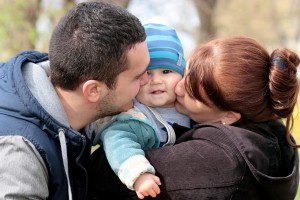 Mental health in early childhood is not given the awareness it merits as a contributing factor to human development. The National Scientific Council on the Developing Child at Harvard University has written a paper and created a video that stresses the significance of early childhood mental health. The report Establishing a Level Foundation for Life: Mental Health Begins in Early Childhood: Working Paper No. 6. emphasizes the importance of focusing on this area. Below are some noteworthy key points from the paper.
Mental health in early childhood is not given the awareness it merits as a contributing factor to human development. The National Scientific Council on the Developing Child at Harvard University has written a paper and created a video that stresses the significance of early childhood mental health. The report Establishing a Level Foundation for Life: Mental Health Begins in Early Childhood: Working Paper No. 6. emphasizes the importance of focusing on this area. Below are some noteworthy key points from the paper.
1. Emotional well-being early in life is central to development
Mental health plays a role in growth, achievement and learning, coping, behaving and building meaningful relationships in all facets of life, starting in early childhood. Mental health is as important as developmental milestones which receive far greater attention. Without emotional well-being all other aspects of growth may have shortcomings to reach full potential. The authors eloquently state that “sound mental health provides an essential foundation of stability.” This emphasizes that mental health early on in childhood positively or negatively is impacted by experiences and relationships which influences functioning and development.
2. Nature, Nurture, Stress and the Brain
The dynamics between genes and experiences contribute to development and mental health. Genetics do not determine the entire outcome for a child. Genes are like a map that can give awareness to susceptibilities. Positive relationships and early experiences can serve as a protective factor against susceptibilities. Negative early experiences and exposure to stressful situations (i.e., abuse, neglect, and violence) increases the risk for mental health difficulties. More specifically, interactions between genes and persistent negative experiences can increase a child’s vulnerabilities, when they exist, and lead to later problems. Additionally, stress in early childhood can impact a growing brain which can lead to mental health problems later in life. Long term stress creates physiological changes, even in young children, and if they do not have supportive relationships that serve as protection, brain development is at a disadvantage. Early experiences and stress have an impact on brain development, relationship and skill development as well as physical health.
3. Mental Health problems and Young Children
Mental health challenges can occur early on in a child’s life. There are differences in behaviors and symptom presentation contingent on age however young children can have difficulties too. The authors share that there have been advances in identification for early age onset of mental health disorders yet challenges still exist with young children. Young children may present with a multiple of problems similar to older children (example: anxiety and bedwetting or irritability and noncompliance) or single temporary behaviors.
4. Prevention and Early Identification
Prevention strategies and identifying mental health problems and those at risk for developing mental health problems are crucial. Strategies implemented correctly can positively impact emotional well-being and outcomes over the course of one’s life. Attention to early mental health problems is vital because early interventions with children and families can have a large impact on future development and problems. Challenges do with exist with early identification given developmental differences seen during stages of growth. However, when interventions, strategies and skills are not implemented as problems begin in early childhood they can lead to more serious problems late in life.
5. Family Role and Factors
Relationships and surroundings help shape a child. Positive relationships with others especially the adults and caregivers in the early years of life set the tone for psychological well-being. Strengthening a relationship between a parent and child can have a lasting impact. Additionally, the mental health of a parent or caregiver cannot be ignored. Caring for a child is a stressful and rewarding experience. An adult struggling with stress, depression or any other mental health condition can negatively impact their quality and style of parenting. Risk for mental health problems in early childhood will rise when relationships with parents/caregivers are lacking attention, affection and reliability.
6. Therapeutic Help
Assisting a young child with mental health needs is best done through various methods and in different settings. Often for young children a strongly supported approach is to focus on assisting the parents / caregivers. Building the parents ability to nurture and protect if stress occurs will influence the quality of their relationship. Providing support to minimize and cope with stress, increase positive parenting strategies and support their healthy relationships will likely prevent negative outcomes for children.
Manhattan Psychology Group provides coordinated services that can help with assisting families regarding early childhood mental health. We provide:
- Individual therapy for adults
- Parent Child Interactive Therapy (PCIT)
- In home behavioral therapy to help the child/parent relationship and routine
- Individual behavioral therapy to assist a child with skill development
- School consultation and collaboration
Source: National Scientific Council on the Developing Child. (2008/2012). Establishing a Level Foundation for Life: Mental Health Begins in Early Childhood: Working Paper No. 6. Updated Edition. Retrieved from www.developingchild.harvard.edu
Video: https://www.youtube.com/watch?v=L41k2p-YRCs
 “Was that bribery or reinforcement?” is a very common (and valid!) question among many parents of young children. Are you unsure if something you give your child (or say to your child) is considered a bribe or reinforcement? Read on for some clarity!
“Was that bribery or reinforcement?” is a very common (and valid!) question among many parents of young children. Are you unsure if something you give your child (or say to your child) is considered a bribe or reinforcement? Read on for some clarity!
What is bribery?
Bribery is when something powerful such as money or an object (including an edible item) is given to a person in order to encourage them to engage in a specific behavior or complete an activity or task. Bribery is given before a person exhibits that desired behavior.
What is reinforcement?
Reinforcement occurs when something is given or said to a person when a specific behavior is exhibited that increases the future likelihood that that behavior will occur again in the near future.
Real Quotes from Parents
“I offered my daughter a cookie for doing her homework.” Check to see if this was a bribe or reinforcer by asking yourself, “Did I give the cookie before or after the homework was complete?” If before, it was a bribe, if given after, it was reinforcement. It was given after in this instance and was reinforcement.
“After weeks of unsuccessful potty training, I gave my son M&M’s. I was desperate!” Check to see if this was a bribe or reinforcement by asking yourself, “Did I give the M&M before or after my son eliminated in the potty?” If before, it was a bribe, if given after, it was reinforcement. In this instance it was reinforcement. Even if the child did not eliminate successfully in the toilet, giving the candy after the attempt is a great way to encourage the child to try again next time.
“I bribed my son with a lolly. I need him to sit in the stroller!” Check to see if this was a bribe or reinforcement by asking yourself, “Did I give the lolly before my son was sitting calmly in the stroller or after?” If given beforehand, it would be considered a bribe. If given after the child was sitting down, it was reinforcement. In this instance, it was reinforcement.
Bribing a child has a negative connotation. However, rewarding a child has a very positive connotation. Many parents are rewarding their child’s positive behavior although they sometimes confuse these two terms. Children benefit from external rewards such as small edible items, points or tokens, small trinkets and labeled praise like compliments, in order to engage in appropriate behavior more often. Continue rewarding and reinforcing your child’s appropriate behavior by praising them and/or offering a small goodie after they have engaged in a behavior you would like to see them do again!



